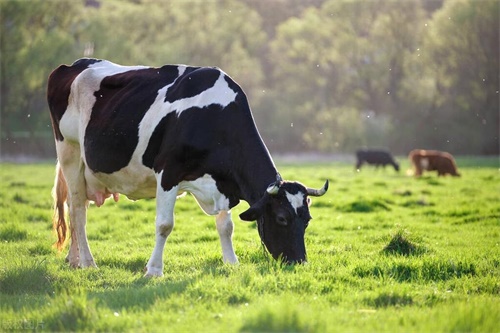When it comes to managing cattle reproduction, timing and accuracy are everything. Knowing exactly how a cow's reproductive system is developing allows farmers and veterinarians to intervene early if something goes wrong — especially with follicle development, which is key to successful breeding. In the past, identifying problems in follicle growth required a lot of guesswork or invasive procedures, but now, portable ultrasound machines are changing the game by offering a fast, reliable, and non-invasive way to spot arrested follicle development before it becomes a bigger issue.

Follicles are those tiny fluid-filled sacs on the ovary that hold the eggs. Their proper growth and maturation lead to ovulation, pregnancy, and ultimately a healthy calf. If follicle development stalls or stops prematurely, the cow may not cycle correctly or conceive, which means wasted time, resources, and lost income for the farmer. So catching follicle arrest early can make a huge difference.
Why Follicle Development Matters
Let’s start with why follicle development is such a big deal in cow fertility. The follicles on the ovaries develop in waves during the cow’s estrous cycle. Usually, one follicle grows dominant and prepares to release an egg, while others regress. If the dominant follicle stops growing too soon—this is called arrested follicle development—it disrupts the cycle and prevents ovulation.
This can happen for various reasons: stress, illness, nutritional deficiencies, hormonal imbalances, or sometimes simply genetic factors. If you’re a cattle producer, the costs add up quickly with cows that fail to conceive on schedule or have irregular heat cycles.
Portable Ultrasound: A Game Changer for Early Detection
Traditionally, detecting arrested follicle development meant relying on behavioral signs like irregular estrus or hormonal tests that take time and money. But with portable ultrasound, you get real-time images of the ovaries and follicles, right on the spot.
You don’t need to haul cows to a clinic or wait days for lab results. A vet or trained farm worker can scan the cow’s ovaries transrectally, observing follicle size, structure, and growth patterns. This immediate feedback allows for early intervention—whether that’s nutritional adjustment, hormone treatment, or closer reproductive management.
The portability factor means this tech can be used right in the field, making regular checks more feasible for farms of all sizes.
What the Ultrasound Reveals About Follicle Growth
Ultrasound imaging provides a window into the ovaries, showing details you can’t get otherwise. Here’s what you’re typically looking at:
| Parameter | Description | Significance |
|---|---|---|
| Follicle Diameter | Size of the follicle (in millimeters) | Smaller-than-expected growth indicates arrest or delay |
| Follicle Wall Thickness | Thickness of the follicle wall | Abnormal thickness may signal cystic conditions or arrested development |
| Presence of Fluid | Amount of fluid inside follicle | Too much fluid could mean cystic follicles |
| Follicle Number | Number of follicles present on the ovary | Imbalanced follicle waves may suggest hormonal disruptions |
| Follicle Growth Rate | Measurement of size over consecutive days | Stagnant size indicates arrested development |
How Early Can Arrested Follicle Development Be Detected?
One of the biggest benefits of portable ultrasound is timing. Follicles generally grow over 7 to 10 days before ovulation. Using ultrasound, a vet can track these changes day-by-day or every couple of days, catching arrested development sometimes within just 3-4 days after the growth stops.
In comparison, relying on external estrus signs or hormone assays might delay detection by weeks. This earlier insight means you can adjust management faster, improving the chance the cow cycles normally in the next round.
Practical Applications on the Farm
Here’s how portable ultrasound fits into everyday farm life:
Routine reproductive checks: Instead of waiting for cows to show signs of trouble, you can schedule follicle monitoring every cycle or at key breeding times.
Evaluating treatment responses: If a cow is undergoing hormone therapy to induce ovulation, ultrasound confirms whether follicles are responding or if the protocol needs tweaking.
Selecting animals for breeding: Identifying cows with normal follicle development early saves time and resources, focusing breeding efforts where they’re most likely to succeed.
Culling decisions: Cows repeatedly showing arrested follicle growth despite intervention might be better off replaced, avoiding wasted feed and time.
How To Use Portable Ultrasound for Follicle Monitoring
The procedure itself is straightforward but requires some training:
Equipment: A portable ultrasound with a transrectal probe designed for cattle reproductive examination.
Preparation: The cow is gently restrained in a chute. Lubricant is applied to the probe.
Examination: The probe is inserted rectally to scan the ovaries. Real-time images show follicle size, shape, and numbers.
Measurement: Using the machine’s calipers, follicle diameters are measured and recorded.
Follow-up scans: To monitor growth rate, scans are repeated every 2-3 days during the follicular phase.
The whole exam takes about 5-10 minutes per cow once the operator is skilled.
Limitations and Considerations
While portable ultrasound is powerful, it’s not a silver bullet. Some things to keep in mind:
Operator skill matters: Accurate interpretation requires practice and knowledge of bovine reproductive anatomy.
Costs: Although prices have dropped, the initial investment can be a hurdle for smaller farms.
Animal stress: If not done gently, the procedure can cause stress, which ironically can impact reproduction negatively.
Other diagnostics: Ultrasound is a piece of the puzzle; it should be combined with other management practices and veterinary care.
The Bigger Picture: Improving Herd Fertility with Technology
Follicle arrest is just one challenge among many in cattle reproduction. But as farms grow larger and more sophisticated, integrating technologies like portable ultrasound is becoming essential. It’s part of a broader movement towards precision livestock farming—using data-driven methods to improve animal health and productivity while reducing costs and environmental impact.
Farmers who adopt these tools stay a step ahead, catching problems early and making smarter breeding decisions. It’s a win-win for the herd and the bottom line.
Summary Table of Benefits and Challenges of Portable Ultrasound in Follicle Monitoring
| Advantages | Challenges |
|---|---|
| Non-invasive, safe for cows | Requires operator training and experience |
| Real-time visualization of follicles | Initial cost investment for equipment |
| Early detection allows timely intervention | Stress risk if procedure isn’t handled properly |
| Portable and usable directly on the farm | Needs repeated scans for accurate monitoring |
| Improves reproductive management and outcomes | Must be part of comprehensive herd health program |
Real-World Impact: A Case Example
A dairy farm in Wisconsin recently started using portable ultrasound to monitor follicle development in their cows. Before, they had a frustrating rate of cows failing to conceive on the first breeding cycle—about 35%. After incorporating regular follicle scans, they caught early signs of arrested follicle growth and applied hormone treatments sooner.
Within six months, the first-service conception rate jumped to nearly 55%. Not only did this improve milk production cycles, but it also reduced the number of open days, meaning healthier cows and better cash flow. The investment in portable ultrasound paid off within a year just from improved fertility.
Looking Forward
With technological advances continuing, ultrasound devices are becoming lighter, easier to use, and more affordable. Some new systems even offer AI-assisted image interpretation, helping less experienced users make better decisions. This trend will likely increase adoption worldwide, making early detection of follicle development issues standard practice rather than an exception.
It’s exciting to see how a tool once confined to specialized veterinary clinics is now empowering farmers directly. Portable ultrasound brings precision, confidence, and timeliness to reproductive management—a real game changer for cattle producers everywhere.
tags: Cow Follicle Development


